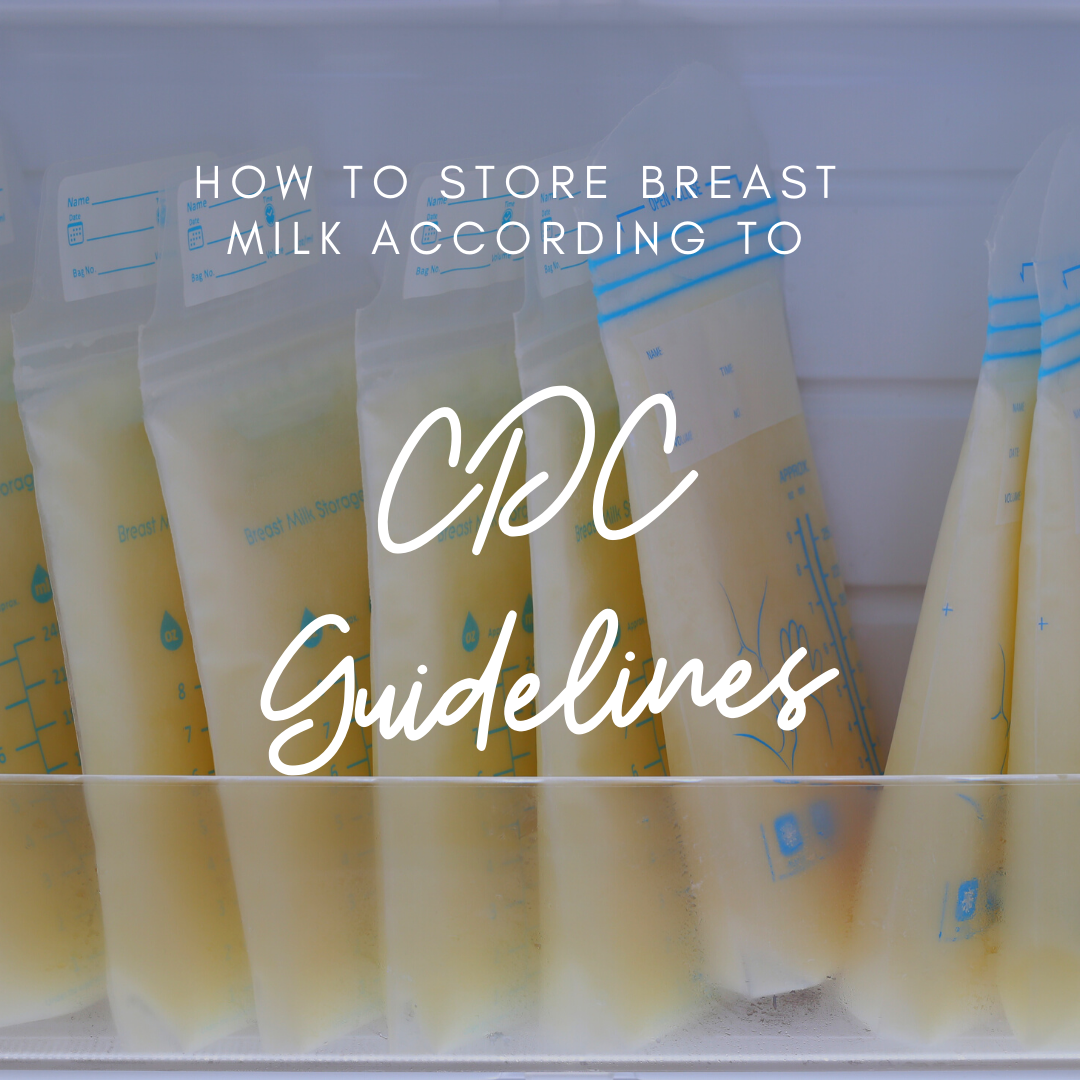Breast Milk Storage Guidelines and Tips
Mommy Care Team
How to Properly Store Your Breast Milk so that None of It Goes to Waste
You’ve made the milk. You’ve pumped the milk. Now how do you store it? Your breast milk is liquid gold, and should be treated as such. You don’t want to just pop it into any bottle and leave it in the fridge for days on end. The CDC and other health organizations have published guidelines for milk collection, storage, and serving to ensure your baby’s optimum health. In this post, we’ll go over these guidelines and include some tips that can help save time, money, or both!
You can find a link to the CDC Guidelines here.
Expressing Your Breast Milk Safely
First and foremost is cleanliness. Make sure your hands, pump, and breast pump parts are clean before you express any milk. If you can’t wash your hands with soap and water, the CDC recommends using an alcohol based cleaner that has less than 60% alcohol. Check that your pump parts, tubing, bottles, etc. are all clean and free of mold. This is also a good time to check to see if anything needs to be replaced, like tubing or membrane.

When you are ready to express your breast milk, have a clean and food safe storage container on hand. If you are using storage bags, be sure to use only those designed for breast milk storage. If you are using plastic bottles, check to see that the bottles are not marked with the number seven in the recycling symbol. This indicates that the plastic may contain BPA, which we don’t want near our baby’s milk. Whatever you are using to store breast milk, make sure you properly seal the bag or bottle.
Pro Tip: BeauGen offers mamas easy to use, reusable milk storage bags from Junobie to make this portion of pumping easy and good for Mother Earth.
Another item you want to have on hand is a marker or label, on which you can write the date that the milk was expressed. If you plan on freezing the milk, you can also then write down the date you thaw it out, and be able to track how long the milk will last.
How Long Will Breast Milk Last?
Room Temperature:
This is one of the biggest questions when it comes to the safety of breast milk. Generally, milk that is expressed and stored at room temperature is good for up to four hours. This means if you pump and can’t make it home or to a refrigerator right away, you have some wiggle room. This begs the question however, what is considered room temperature. According to organizations like the CDC, room temperature is considered 77 degrees Fahrenheit or colder.
Refrigeration
Milk that is pumped and then stored in the refrigerator is good for up to four days. This is why it is important to label your container for proper storage and consumption. If you plan to store your milk in the refrigerator, do not put it in the door of the refrigerator. This part might not be as cold as the center of the appliance. For the safest storage, place your milk on a shelf in the center or towards the back of the refrigerator.

Moms often have questions about combining milk from different pump sessions. You can combine milk that you have safely stored in the refrigerator with freshly pumped breast milk. The key here is to go by the date of the older milk. Adding fresh breast milk does not make older milk last longer. Before you add your new milk, allow it to cool and then add it to the refrigerated milk.
If you are traveling, and do not have access to a refrigerator, you can chill the milk with ice packs for up to 24 hours. Once you reach your destination, pop your milk in either the refrigerator or freezer depending on when you will need it.
Frozen
If you are planning to freeze your milk, make sure to leave a bit of room at the top of the storage container as it will expand when it freezes. If the container is totally filled, the milk expanding might break the seal and then it is no longer safe to feed to your baby, even if it is still frozen. Also, it can be helpful to freeze milk in smaller quantities to help ensure that it stays safer longer.
There are differing time frames for frozen breast milk. Some sources say that milk can be stored frozen for up to 12 months, but that it is best to use frozen milk within six months. The choice is up to you whether you feel comfortable using milk that has been frozen for six or 12 months. Make sure that your date is clearly marked so that you can easily rotate through your freezer stash using the milk before it is no longer safe.

If you do not have a stash large enough to make it to 12 months, do not put pressure on yourself. Remember that you are pumping to feed your baby, not your freezer. All you really need is to have enough milk pumped for your next feeding.
It is also important to note that breast milk is likely to change colors during the freezing process. A small color change does not necessarily indicate that the milk has gone bad.
Thawing Frozen Breast Milk Safely
Just because you froze your breast milk does not guarantee that it is safe to feed to your baby. Before thawing the breast milk, check the date to make sure the milk is still within a safe range. Check the seal of the container to make sure that the milk is still fully contained in the bag. Then, you can thaw it.
Only thaw enough breast milk to use within 24 hours. After breast milk has been thawed, it has a short shelf life. t Do not refreeze breast milk that has been thawed.
How to Thaw Breast Milk:
There are three easy ways to thaw your milk safely. The first and easiest way is to take a container out of the freezer and leave it in your refrigerator overnight. When you wake up in the morning, the milk will be ready to warm and serve to your baby.
The next, if you forget to thaw it in the refrigerator or your baby needs more than you planned, you can take a frozen bag or bottle of milk and place it in a container of lukewarm water. In a short time, the breast milk will be able to be fed to your baby. Lastly, you can hold the frozen milk under running water that is lukewarm in temperature.

Once the milk has been brought to room temperature, it must be used or discarded within two hours. This is why it is such a good idea to store frozen breast milk in small quantities. It can help to eliminate wasting this liquid gold.
How Not to Thaw Breast Milk:
Never microwave breast milk. While it might sound like an okay shortcut, microwaving breast milk damages or destroys the nutrients contained in the milk. Even still, microwaving does not ensure that the milk will be heated evenly. It may create hotspots that will burn your baby’s mouth.
How to Serve Expressed Breast Milk Safely:
Now that your milk is thawed completely, you’re ready to feed your baby. Yep! You can absolutely feed your baby cold milk. Sometimes they might prefer it this way. If you or your baby prefer to warm up the milk, we’ve got you covered there too.
Bottle warmers are one hassle free way to heat up milk for your baby. Follow the instructions provided by your device, for the specific type of bottle you are using.

Not all moms have or want to purchase a bottle warmer. That’s totally up to you. If you prefer to opt out of an extra gadget, pour water into a pot, and place a sealed bottle in the pot of water. Then use the stove to gently heat the water and thus warm the bottle. Test the temperature of the milk on the inside of your wrist before feeding your baby. The milk should be warm, not hot so that it doesn’t burn your baby’s mouth.
When the bottle is warmed and ready to go, give it a few gentle swirls with a twist of your wrist. This will mix the fat into the milk. Shaking the bottle can introduce bubbles which can upset your baby’s tummy. If your baby does not take the full bottle, you can try again in a little bit. Just be sure to discard the bottle if it sits for longer than two hours after you warm it up.

